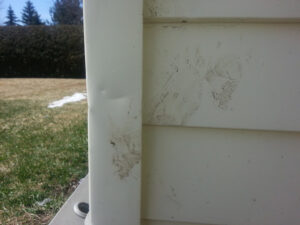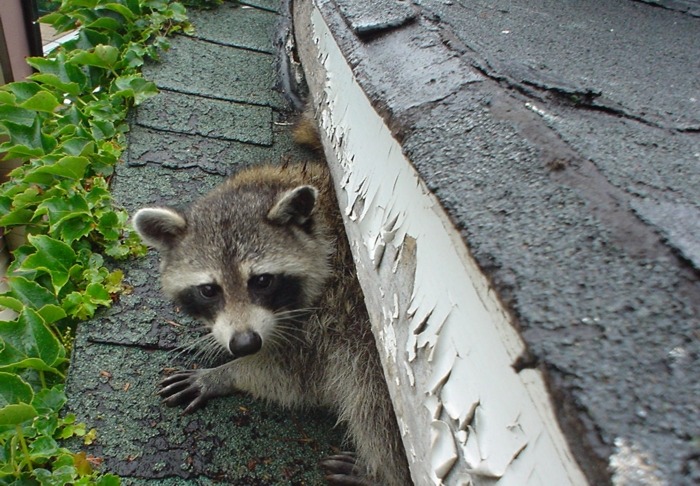How do you identify a raccoon track? Have you ever noticed animal tracks around your home but can’t seem to find the culprit? The reason is that they don’t want you to find them. Investigate and learn how to recognize tracks so that you can help the experts with effective wildlife removal. When you need raccoon control call our Bowmanville Skedaddle Humane Wildlife Control team for help.
The Scene
You’ve seen your trash cans overturned or your trash scattered around the yard. You know it must be an animal looking for food, but what kind? Did a neighbourhood dog make its way into your yard to feast on your leftovers? Wait, is that a track? It looks like a toddler has been doing handstands around your yard. What??

The Prints
You, my friend, have been visited by raccoons. Like humans, they have five long toes and what looks like a palm without the pad at the bottom. If you look closely at the raccoon tracks, you can see imprints of nails above the toes. The rear track is similar, but the “palm” is broader and more filled in than that of the front paw, and both have inner toes that are set further back like thumbs. The prints measure approximately 1.4 to 4.1 inches long and 1.3 to 3 inches wide.

The Trail
Raccoons have a distinctive gait or way of walking. The left hind foot is paired with the right front foot so that it almost looks like they’ve hopped, leaving two prints close together with two prints trailing anywhere from 6 to 16 inches behind. This is called a paired or 2x pattern. However, if they are taking a leisurely stroll, it could look more like a line of slightly offset prints.

The Droppings
The saying “What goes in must come out” is true with raccoons as well. After their feast, the raccoons are going to leave you another clue. It is called scat. Raccoon droppings can vary greatly, as the diets of omnivores vary according to what is available.
A good sign that it is a raccoon dropping is where it is located. If it is near the base of a tree or on a log near a water source, the chances are that the culprit is a raccoon. You should exercise caution if you come across the scat, as it can contain parasites like roundworms. Roundworms can be inhaled and are dangerous to humans.

The Other Potential Suspects
While raccoon tracks are fairly distinctive, two other potential suspects have similar prints. Opossums and river otter tracks can be mistaken for raccoon prints. A river otter has shorter toes, and you can see the imprint of webbing between them. The thumb-like toe on the opossum is much more prominent on the rear foot than the raccoon.
The scat of a river otter is also different from that of a raccoon as it is less defined, looking like a blob or a cord with tapered ends. Whereas the raccoon droppings are tubular with blunt ends. River otter feces also tend to have a strong smell similar to something dead and decomposing.
What To Do if You Have Raccoons
Now that you are a super detective and can recognize the evidence trail of those pesky raccoons, what do you do? First, as with all wildlife, do not attempt to touch them or trap them. You could put yourself or the animal at risk of injury. Then, contact our Skedaddle Humane Wildlife Control Bowmanville team. Not only will we remove the wildlife, but we’ll even clean up the mess they’ve left behind. We are proud to be endorsed by local SPCAs and humane societies for our safe and careful handling of wild animals.



